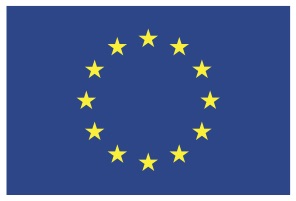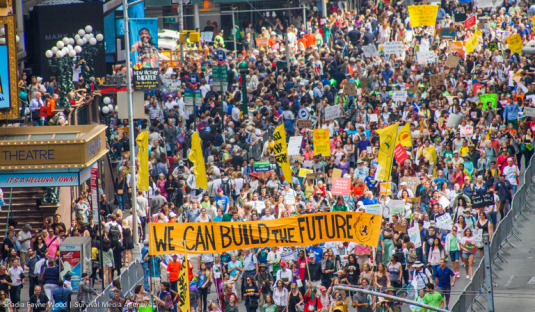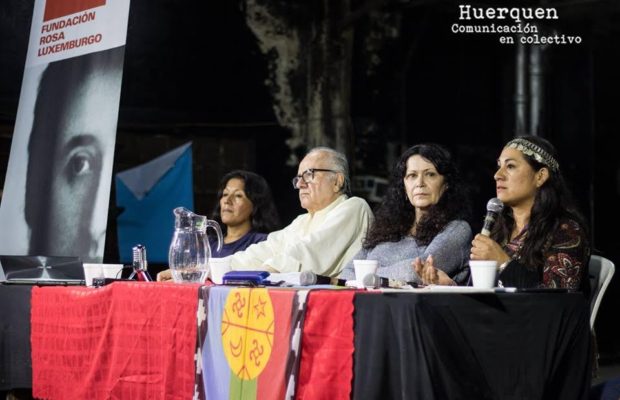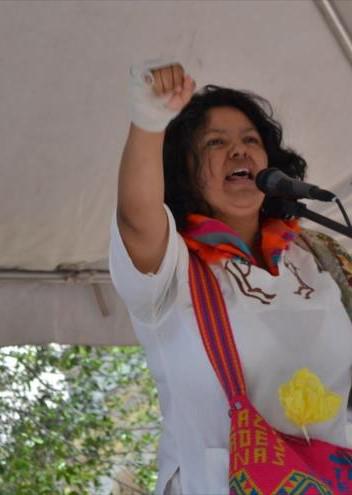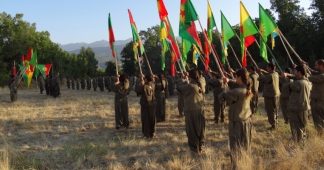by Alexander Kolokotronis
Since the beginning of the Greek financial crisis, both the Right and the Left have advanced a narrow set of narratives, policy possibilities, and even political actors. One movement that has largely remained outside of the discourse has been the solidarity economy movement. A key organization within the solidarity economy movement is Solidarity for All. Solidarity for All is an organization that offers technical support, capacity building, and network-scaling for the various grassroots initiatives around Greece.
In a 2014-2015 report entitled Building Hope: Against Fear and Devastation, Solidarity for All draws attention to “the devastating effects of the radical neoliberal experiment on Greek society.” The report also sets out to highlight “another experiment: that of Greek society taking action through self-organization and solidarity, of people standing up and resisting their economic and political ‘saviours.’”
In the report, Solidarity for All cites statistics that are often unseen in accounts of Greece. For example, the organization notes that “If we include the economically inactive population…56.3% of the population are out of work.” Undoubtedly, this number has increased, as it is drawn from 2014 data. Between 2008 and 2013 the youth unemployment rate increased from 21% to 59%. With the increase in the unemployment rate, there has been dramatic reductions in unemployment benefits, both in terms of the nominal support provided, as well as the relative total of the unemployed who receive any benefit at all. While 58% of the registered unemployed received benefits in 2008, only 14% received (reduced) benefits in 2014. With healthcare tied to employment, at least 2.5 million people have lost “their social security status.”
The report goes on to cite skyrocketing increases in the number of people unable to pay their mortgages, taxes, as well as the total amount of overdue bills. With the foreclosure ban lifted in the midst of crisis, banks have been able to seize and confiscate property and homes. Together all these statistics, and many more, provide a startling image of a country that now sees the majority of its population living under the poverty line. It is for this reason that a UNICEF report has referred to this crisis as a “Great Leap Backward.” The economic cost is clear, but the psychological and social impact is immeasurable.
Nonetheless, as the report emphasizes, there are alternatives, and they are sprouting up throughout Greece. These include solidarity healthcare clinics, food solidarity structures and solidarity kitchens, “without middlemen” networks, immigrant solidarity networks and cooperatives. With the crisis bringing the capitalist mode of production into question, these democratic organizational forms are being sought out and created. As Christos Giovanopoulos – member of Solidarity for All – emphasizes in this interview, these alternative institutions are not simply about fulfilling a need, but about building capacity and ensuring all participants have agency within those same alternative institutions.
Thus, one finds a range of organizational designs and setups even with one type of alternative institution. As Solidarity for All states, “There is not one model of solidarity clinics, each one is unique, and the same goes for all the solidarity structures. While all solidarity health centers are self-organized, some are linked with local doctors’ associations and trade unions, some with local political groups, or cultural centers.” The solidarity clinics are nationally aligned in the Cooperation of Solidarity Clinics and Pharmacies. With Attica being the main site of alternative institution building, the region possesses the Coordination of Solidarity Clinics and Pharmacies of Attica. As the report itself states, the aim of these clinics is not to substitute for the state, but to fill a need and work in conjunction with existing health workers’ unions.
Food distribution has also taken different forms with solidarity food structures, solidarity kitchens, and “without middlemen” networks. Without middlemen networks connect food producers directly to consumers through mechanisms such as preorder. The result is reduced prices in food, as well as ensuring a higher income for producers. These networks also provide a framework through which socialization of production, distribution, and even consumption, can be steadily built and scaled. One example of this is that each producer of a given bazaar donating two to five percent of their goods, which are then distributed to families that cannot afford to purchase food.
In the case of cooperatives, the state put in place a social cooperative enterprise law. When I visited Greece in August, I was told approximately 700 enterprises are registered under this designation, however, many of these enterprises are not substantively cooperatives, and instead are NGOs. The real number according to the report, as well as a Social and Solidarity Economy volunteer in Solidarity for All, is between 300 and 400 cooperatives. This includes the high-profile workers’ self-managed firm VIOME, a recuperated enterprise that has endured frequent attempts by authorities to liquidate it and sell off its assets.
Also, expanding due to the rapid inflow of migrants and refugees is immigrant solidarity networks and structures. These have received increased attention in large media outlets, and have been noted for the inclusion of migrants and refugees in the decision-making processes and apparatuses of such organizations.
In this interview with Christos Giovanopoulos, greater context and detail is provided for this turn of events. Giovanopoulos does not claim to speak for Solidarity for All or for the movement as a whole, but rather an actor engaged in the grassroots initiatives. Giovanopoulos provides us with a strategic outlook and philosophy for not simply countering neoliberal discourse and policy, but building an alternative to it.
1. How did the solidarity movement start in Greece?
The Greek grassroots solidarity movement is the offspring of the Squares’ occupation movement of summer 2011. The Squares’ Movement had a transformative effect on Greece, as it popularized the idea and practice of self-organization and direct democracy. This was novel for the vast majority of the participants. Many thousands of people came in contact with anti-capitalist grassroots experiences and forms of organizing – alternatives to the neoliberal logic. According to a poll conducted by Kathimerini, the largest rightwing paper, 28% of the Greek population (about 3 million) participated in one way or another in this movement. From this one can imagine the kind of cross-fertilization that occurred in these times of intense political fighting and social innovation.
Popular radicalization from, and political resistance to, the Troika-dictated “state of exception” and the Greek political system, took the concrete form of the grassroots solidarity movement. This started after the Greek parliament accepted the mid-term (2011-2016) bailout program (late June 2011). The popular movement responded by attempting to block its implementation. Strikes and government-building occupations – primarily in the public sector – occurred, but most importantly, there was a ‘no pay’ campaign against a new household tax. The tax was included in the electricity bills. Refusal to pay meant you risked having your power cut. The last People’s Assembly of Syntagma Square (end of September) called for the ‘no pay’ campaign. The Assembly stated “we won’t leave anyone alone against the crisis.” This became the banner of the solidarity movement. The campaign employed a diversity of tactics, ranging from appeals against the government to the high court, to (illegal) power reconnections. By late October, it spread through the whole of the country, ultimately including many different actors: from left and progressive mayors, unionists and lawyers, to dozens of neighborhood assemblies and committees, which collectively refused to pay.
This movement acted as the bridge between the Squares’ occupation and the appearance of the self-organized solidarity structures. The ‘don’t pay the debt’ demand amalgamated in the tangible act of ‘no pay’ – refusal to pay – the extra household tax. Over the next months, the mass and militant protests of the 28th October 2011 – the national day of OXI (NO) to the fascists in 1940, now acquiring a new meaning – brought down the Papandreou government. On 12th February 2012, it also brought down the technocrat coalition government of Papadimou. In the meantime, a whole network of solidarity structures and alternative economy initiatives had emerged: solidarity clinics, solidarity free-schools, alternative currencies, barter economy groups, self-managed cooperatives, and the ‘without middlemen’ (basic goods) distribution networks.
2. What is the role and purpose of the solidarity structures? Are they simply a response to austerity? Or something more?
Your question touches on some critical issues. There is an approach, that reads the current crisis predominantly from an economic viewpoint. This overshadows other facets of the crisis by focusing only on the (anti-)austerity discourse. This view, in my opinion, fails to break with the neoliberal concept (and dominant agenda) of politics, which means the reduction of the latter to mere economic logic. My critique does not imply a ‘need to abandon’, materialism, class struggle, or, Marxism, as analytical and practical tools. On the contrary, it refuses to reduce them to merely economic demands, or, issues (including the debate over the currency). Such is to refuse the mostly defensive demands that do not necessarily relate with the attempt to create the material conditions for building power(s) that can enable a movement and a people to apply their own policies and produce change. Such anti-austerity discourse usually regards the grassroots solidarity movement as a response to the collapsing ‘welfare state’, overlooking the different kind of politics and resistance practiced by the solidarity movement. Some view it as an example of an active and compassionate ‘civil society’ (or, NGO sector) that needs to expand, while others – coming from the ‘traditional Modern Left’ – consider it a substitute (and thus a threat) to the role the state-run public services should play.
The solidarity movement transcends those positions. First and foremost, the practice of the solidarity structures holds the potential to synthesize active popular participation – as a response to immediate needs of a population threatened by a humanitarian crisis – while it enables the resilience of this society to stand up and carry on resisting. Beyond supporting the suffering, it aims to engage them in the struggle to change both deeply rooted habits of political ‘assignment’ and the conditions that cause their hardships. Thus, it develops spaces and practices that could form a different paradigm. Specifically, a paradigm for people-managed ‘institutions’.
This implies a different role and practice than that of merely supporting an ailing society. Its modus operandi – based on assemblies and self-organization – can foster new kinds of social relationships, pushing against the disintegration of the social fabric. Moreover, the practices of the solidarity structures develop a favorable terrain for breaking the split between ‘beneficiaries’ and ‘benefactors’. In that manner the medical practice of a doctor in a solidarity clinic differs from his/her practice in a professional clinic. The political context within which this movement emerged has entangled needs, desires and emotions with the will to resist and change matters by becoming active and by creating. This is exactly where the dominant unjust system has failed you. Here lies the transformative potential of the grassroots solidarity movement, which is active beyond the confines of being merely support structures. This is where it differs from charities, NGOs, and the ‘civil society’, which are usually in pain to claim their apolitical, or, non-governmental (supposedly independent) role. In reality, they are instrumental of and to the neoliberal social model, where ‘civil society’ – named ‘big society’ (UK), or, ‘participatory society’ (Netherlands) – substitutes for the welfare state model. In contrast, the solidarity movement does not hide its political role and what it stands for, including its aim to produce social and political change, and to create the material conditions that permit a different democratic paradigm to emerge in order to restructure the existing clientelist public (welfare included) system. Thus, its difference from the ‘traditional Modern Left’ political culture is not in its long-term aims, but in that it goes beyond just demanding and voting. It defends social rights in a very tangible way by trying to develop tools and through standing by the people needs. This means forging enduring social relationships in order to show that there is an alternative based on a different set of principles, ideas (e.g. equality, universal rights), and mode of social organization.
This political practice becomes increasingly important in conditions of emergency, devastation, and crisis of social reproduction, which produced by the ‘state of exception’ regime and the neoliberal agenda still active in Greece. Moreover, it alters the concept of politics (and social policies), highlighting the importance of popular participation and/for a different role of the state. For a state not as a substitute of social action through its representational (political or technocratic) structures, but as a legislative insurer of what society can self-manage. From a social point of view, I find this refreshing and emancipatory. It is a process that underlines the importance of building material capabilities. For any kind of political emancipation and (exercise of power for) change to be successful, it must not be limited to an abstract rhetorical social referent. Political emancipation and change must also be oriented towards real popular participation and social autosuggestion. In other words, a notion of politics that enables and implants democratic processes and responsibilities of power in every aspect of social and economic action as a prerequisite for building the social dynamics and infrastructures that can allow one not simply to take power, but to enable the people to have power to exercise their will. Having said that, I must clarify that this struggle does not exclude the need to take power. It highlights, rather, something obvious to all after last summer’s tragic reversal of the OXI (NO) plebiscite: that you cannot have political power without having set state-independent bases of social organizing, popular power and alternative economic networks.
Unfortunately, this transformative potential of the grassroots solidarity movement has been dwarfed by fighting the ‘big battles’ strictly on the representational level (in the literary meaning of the term). In other words, they have been fought as mere symbolic representations of ‘Real battles’, as simulacra in Baudrilliardian terms. The main reason being the Left’s (and I do not refer to SYRIZA alone) perception about politics and about where political power lies.
So, if the field that the solidarity movement operates within has been defined, indeed, by the eradication of the welfare state, then constitutive for the movement’s formation and practices has been its rooting in the political struggles against the Troika regime. This comes in the form of the fight for democracy and popular sovereignty. A political imperative that has worked as the imaginative glue between heterogeneous attempts that solidified in a loose common front. This enabled the meeting of quotidian politics with the struggle for political power, even if this was expressed through SYRIZA. But, it experimented with collective processes of decentralized, open and participatory forms of bottom-up democratic infrastructures of resistance (today) and power (tomorrow).
In short, I think the solidarity movement has been more than a mere response to austerity.

Caption: Map of solidarity structures in Attica/Athens region from 2014
3. Have there been past experiments and attempts at building solidarity structures in Greece? For example, what is the legacy of cooperatives in Greece? If so, can you elaborate upon that history briefly? And how is the current movement different from these past experiments?
There have been different moments in Greek history where cooperative and solidarity movements have appeared. This ranges from the history of national independence struggles to the communist movement in Greece. Indicative to this is the reply of Makis, from the recuperated and under worker’s management factory of VIOME, to a young German activist in a solidarity meeting in Berlin. Makis was asked if VIOME was inspired by ZANON, in Argentina. Makis replied that the only cooperative example they knew was that of Ampelakia in late 18th century Greece. Ampelakia has been canonized in the Greek national narrative as the form of organization of Greek communities under the Ottoman Empire. This form of organization forged the foundations of the modern Greek nation-state. Then Makis went on to say how they enthusiastically discovered ZANON, feeling their experiences resonated with each other.
I believe, the biggest legacy that exists is still-present memories and practices of a strong community-based culture in Greece. These have been passed-on through generational relay, involving also memories of collective communal production (or, at least re-production) mainly in the countryside. This background has been overlooked by dominant discourses on politics, including those of the radical political movements. Yet, it makes-up one of the most important references for the common people and the development of the current movements, especially among the ‘less politicized’.
Regarding previously organized experiences, the most known is by far the farmers’ cooperative movement. This appeared in the post-dictatorship times and eventually degenerated, becoming an integral part of PASOK’s state apparatus, and therefore a byword for clientelism, corruption, and inefficiency. It is sad that this most recent experience has given cooperativism a bad name.
A positive, but quite marginal experience, was the few short-lived worker cooperatives in the mid-late 1970s, which formed part of the struggles of a radicalized young generation of workers. Yet, by the end of this decade such attempts waned and went unnoticed. To these examples we could also add the EU/state subsidized women’s cooperatives, especially in the countryside, as an outlet for local and household products. More social enterprises than self-managed coops.
Such legacy does not imply continuity with the current self-managed cooperatives. The most considerable difference of this new wave is the importance it gives to horizontal processes of decision making, economic self-management and equal pay. This is due to the ideological and political motives of the first cooperatives just before the crisis, as a form of solidarity with the Zapatista movement. They aimed to experiment with a different work-model and solidarity trade as an attempt to create and advance collective modes of economy. The advent of the crisis added the objective of satisfying the need for work and income.
But not all new cooperatives belong to this model, as the idea of cooperatives spreads quickly within the development of the so-called “third sector” (including start ups, social enterprises, etc.). The existing (subject to change) legislation on cooperatives was tailored as a device to outsource services from the public sector, especially from the local authorities towards cooperatives created by former local authority employees. Many have seen this (and thus the cooperatives) as a Trojan horse for the privatization of vital community social services (libraries, nurseries, elderly care, etc). Therefore, the terrain of cooperatives is also a field of contestation, which the self-managed cooperative movement strives to define. This fight is of crucial importance. It can determine the economic and institutional model of the cooperative movement towards a more socializing form (with transformative economic potential), vis-à-vis the (‘social’) entrepreneurial one, in a country where 1 in 4 are out of job and over 50% of youth are unemployed.
The cooperatives, though, are only part of the solidarity movement with which compose the ecosystem of solidarity economy. It is not a coincidence that one of the hotbeds of the solidarity movement, in winter 2011-2012, was the huge solidarity wave among the steel-workers of Elliniki Chalivourgia. They occupied their factory in order to roll back the layoffs of dozens of their co-workers. Or, similarly, the solidarity movement for the workers-managed VIOME factory, which took the active form of distributing the cleaning products of the recuperated factory.
However, as I mentioned earlier, the left and radical movement hesitated at the emergence of grassroots solidarity structures. The unearthing of the communist-led solidarity movement in the mid-war period (with two groups ‘Workers Solidarity’ and ‘Social Solidarity’), but mainly during the anti-NAZI partisan resistance with the ‘National Solidarity’, played an important role to the victory of the resistance. This legacy has helped legitimize the current solidarity movement. These historical movements, having remained marginalized in the narrative of resistance, now re-emerge under the light of the current experiences, refreshing memories, but also conceptions about multiple modes of popular organization and resistance.
4 – What are the greatest challenges for the solidarity movement in Greece? For instance, what are some of the obstacles to creating more solidarity structures (such as health clinics, cooperatives, etc.)? And what are some of the problems existing solidarity structures currently face?
The further growing of the solidarity and cooperative movement cannot be reduced to a mere logistical matter, but it should be seen on two levels. First, in relation to their immediate needs in order to maintain the ability to meet the growing needs of a society under constant strain, or, to be economically viable in the case of co-ops. Second, in relation to their political potential as hotbeds of a different paradigm of social organization and popular participation. In my opinion the latter is the biggest, and most difficult, challenge and also the most critical aspect for the solidarity movement if it wants to maintain its vitality. Yet, the former is the most pressing one with ongoing policies of exclusion.
Since 2014 the growth-model of the solidarity movement has entered a different phase. This is distinct from the 2012–2013 period, when the solidarity structures mushroomed throughout the country embracing a vast array of everyday life and needs (food, health, agricultural and solidarity economy, education, culture, legal support, housing rights, solidarity to refugees, etc.). Despite the slowing-down of new formed solidarity structures, the constantly growing number of those affected by the memoranda, led more people to the solidarity structures. This resulted in (a) the growing and imminent need for more resources, as the solidarity structures often stretch beyond their capabilities, and (b) the multiplication of the activities of the solidarity structures beyond their initial field. Thus, solidarity clinics develop also food support projects, or, food solidarity structures try to develop cooperative production in order to meet their needs but also to create job places.
In this context the main challenge for the movement is how to deal with the issue of resources, in order to cope with the exponential growth of needs, without sacrificing its political characteristics. If we allow those practices of mutuality and engagement to wane out, the implication will be a restricted practice of mere provision of social services – a function not much different from the NGO, or, volunteering sector. The greatness of this movement has been that it aims to build the ability of the people themselves, through a culture of self-organization, to resist, not simply to survive and get by. Yet, the latter becomes of primary importance under conditions of violent exclusion, proletarianization, and crisis of social reproduction, as a means to maintain people’s physical and moral strength and resisting capabilities. However, if the practices a movement devises do not foster a different mindset, relations and tools, away from a ‘benefactors – beneficiaries’ model, its scope risks to be reduced to countering the most extreme facets of the humanitarian crisis, instead of contributing structurally to building the potential for its end.
Therefore, despite the pressing and immanent challenge of resources, the most significant challenge is to keep up its role as political energizer and incubator of social transformation. Our ability to respond to this will decide the future character of the solidarity structures as spaces of social self-organization and popular participation. The political atmosphere in Greece after last summer’s shocking developments, which have affected the desire of the people to mobilize – as the (political) aims of the previous period (remember the OXI – NO) have evaporated – make this challenge even more crucial for the solidarity movement.
On the positive side the response of the Greek people to the ‘refugee crisis’ stands as the latest sign of the resilience and the yet available psychological resources of this society to resist, even in times of political frustration and setbacks. Moreover, the solidarity with refugees’ actions have prompted in some cases the creation of new permanent solidarity structures that address the needs of both refugees and local communities. One more indication that the people find the strength to mobilize when something motivates them deeply, when they feel they contribute to, and become agents of, something bigger than mere survival.
Regarding the cooperatives’ growth, as I said earlier, it is linked to the people’s efforts to get out of unemployment and lack of income, while their development stumbles on a hostile and inadequate institutional framework. The main problem is the scarcity of funding and financing options, especially in order to start a cooperative, as cooperatives are excluded from the state’s incentive policies for the creation of new companies (at the benefit of private entrepreneurship). In addition, certain professions (e.g. lawyers, civil engineers) are not eligible to operate under a cooperative scheme. This has led many to create cooperatives with low-level investment in the service sector (cafes, taverns, new-tech support, groceries). There is also the lack of any provision for social use, or socialization, of defunct and abandoned production units, in both private and public sector, e.g., the premises of the old farmers’ cooperatives, that now stand idle and dilapidating. For these reasons, we are in the process of founding a cooperative and solidarity economy forum. This is a collective entity which aims to facilitate (a) front desk information and legal support for anyone wants to start a cooperative, (b) development of tools and training according to the needs and aims – financial, or, political – of the self-managed cooperatives, and (c) to stir, intervene and promote a friendly image for the concept of workers’ self-management and changes in its legal framework.
5 – What is the relationship of various solidarity structures to the broader left-wing in Greece? Are there any specific state policies that could greatly aid or clear the way for the strengthening of the Greek solidarity movement?
There may be actions the state could take, not for the solidarity movement but, for those hit by the memoranda, alas those are destined to remain gestures rather than ‘great aid’. Indicative is the example of the government’s ‘parallel program’. It was to be discussed just before Christmas, but the government withdrew in less than 24 hours after it announced it, under the creditor’s pressure and in order the 1 billion euros instalment of the bailout to be released. The program, which included provisions for health care of the uninsured by the public health care units, returned and adopted last week in the parliament, but reduced. Thus it demonstrates that there is a very low margin for maneuver under the regime of creditors’ supervision. In the framework of the third memoranda, everything must be approved, or tolerated, by the ombudsmen of the Quartet (former Troika). As long as the government’s priority, as itself has declared, is the implementation of the structural changes dictated by the bailout agreements, this will determine what in reality can do and what not.
In the cooperative economy, for example, new legislation is on track, indeed. Yet, it is one thing to see it in comparison to the existing problematic one, and it’s another in relation to the economic readjustment policies. The latter – privatizations, markets ‘liberalization’ etc. – in reality drastically diminishes the productive capability and economic stature of the country, undermining its ability for political and democratic sovereignty. In that respect, while the cooperative and social economy can be a tool for promoting a mode of socialized production, the overarching economic conditions move drastically to the opposite direction undermining such potential. It is not a coincidence that, from the government’s (and EU’s) point of view, the cooperative economy is considered as one of the means to counter the huge and long-term unemployment. It is way to enhance alternative forms of social entrepreneurship, instead of being a model for building a different economic paradigm outside the confines of the dominant international division of labor.
By the same token, one can better understand the government’s projects regarding the humanitarian crisis. Financial shortage and bailout commitments allow the allocation only of a certain amount of funds for ‘solidarity tokens’. It is attempted, indeed, a rationalization in the use of the existing funds in order to reduce the exploitation of human need by various speculators. However, these programs are disproportional to the needs and numbers of those who slip into poverty due to the ongoing re-adjustment and austerity policies (with more pensions’ cuts on the way). In this framework I do not think the state can do much.
After all, the role of the solidarity structures cannot be reduced to that of satisfying the social needs produced by the bailout agreements, regardless who administers them. A fundamental principle of the solidarity movement is that it does not want to substitute for the welfare state. Its role is, rather, to create those conditions and paradigms that enable the structural undermining of the bailouts and thus become a force of change outside the neoliberal constrains. In other words, its aim should be not to save the world, but to change it. On that political horizon, it can build synergies with various actors, including the state. Yet, when the state decides otherwise, prioritizing the implementation of the bailout and readjustment policies, any cooperation, even if it addresses emergent social needs, becomes part of a different agenda. For example, if the solidarity clinics are considered by the government as means to reduce its burden to provide universal health care, this provides a framework that may turn them into replacement for what the government cannot deliver. So it’s down to the solidarity movement to decide what kind of relations can have with such policies and institutions. In any case the state cannot replace the function of the solidarity structures as places of social self-organization. Thus, even if universal healthcare is reinstated, the distinct role of the solidarity clinics as a different paradigm of self-managed basic health care centers and generators of people-centered health policies, will come even more to the forefront.
Regarding the relationship with the broader left, I want to repeat that the solidarity movement started and still can be a transversal movement and event, among and beyond the different left factions. Its relationship with the Left (and the antagonistic movement) is a complicated and troubled affair, and not a linear and peaceful one, as many have presented. The fortunate conjunction of the political left with a people’s grassroots movement, and of quotidian politics with the struggle for political power is a moment that does not occur often. It’s a socio-political mix that reveals our potential. It also tests various limits and dominant perceptions of the political left, more specifically its capability to cooperate with and accommodate the desires and forms of action of “oi polloi” (the many). The discrepancy (and mingling) between the discourse of the ‘politicos’ and the common people has been a prevalent trait of these years.
The backbone of this movement consisted by the social left and by many who received their political baptism in the anti-memoranda struggles. Its meeting with the political left was inevitable as long as there existed the common aim to rollback the causes of social devastation. As the stakes of the political conflict rose, and the cracks of the political system grew, this popular discontent met with the alternative SYRIZA represented at the time. This was (and is) a process and a relationship under constant negotiation. One that fosters hybrid forms, as it deals with (creative at times) tensions between old habits and established (dare I say, dated) concepts of politics with an emergent political culture constitutive of new agencies. I am not referring just to the parties and social movements relation, but between what I call “specialists of resistance” (political groups, trade unions, social movements) and the emerging political subjectivities and vocabulary of a popular majority. At the same time, the issue of liaising with institutions – local or central authorities held by the radical left (not only SYRIZA) – has been a critical test for the solidarity movement. The grassroots’ movement and the struggle against those in, or for, power (expressed through SYRIZA, but also in the distinct form of the OXI referendum) followed parallel, cross-cutting and (considerable at times) overlapping routes. But it is a mistake to conflate the two, or, to consider them as two separated autonomous realms.
In a double act, the solidarity movement grounds the struggle for political power in the everyday fights and needs of the people while it highlights the centrality of the struggle to remove those in power, in order to open up possibilities for an alternative. This experience suggests a different viewpoint that transcends the distinction (by fusing) “social movements” vs “political representation”. It draws a different line: between those who understood politics as ideological critique and those who understand it as the effort to create the material conditions in order “to make possible the impossible”, as Marta Harnecker argues.
The potential of this movement, as a multiplier of possibilities and capabilities, has been undervalued, if not ignored. The political left saw it as just another “social movement”, due to its perceptions of change and (through) political power. This movement has laid out a different question, or rather task, than the “take or not take power” (in order to change the world). By building self-organized social structures, it delineates processes to “create power,” which also enable the power to change when one acquires state power. If there is a reason to argue for the transformative potential of this movement, it is exactly due to its capacity as a network of (infra-)structures and as generator of policies designed on the basis of its practices through the deepening of democratic processes and popular participation.
Thus, we speak about a potential public sphere from (those) below, able to produce both alternative policies and the power to exercise (or fight for) it. This is not an ‘optimist projection’ but statement of its strategic potential. Had this movement been considered in its full potential, it could have acted as a counterweight to the creditors’ blackmails. It could have been a means to solidify the political will and perspective of the people. It could have also produced its material backing, had the SYRIZA, as opposition and government, taken it seriously since 2012. Even in the case of being forced into a deal, this movement could have provided SYRIZA with a wider margin to negotiate and move. It could, and still can, foster the potential for a real and pragmatic alternative plan. An alternative plan that extends beyond the impasse of the dilemma of signing onto the purported realism of TINA (“there is no alternative”) and a creditors’ enforced GRexit.
Christos Giovanopoulos is a founding member of Solidarity for All and member of the initiative for a Hub of Social Economy, Empowerment and Innovation. He is also the editor of Democracy under Construction: from the Streets to the Squares (A/synechia, December 2011, Athens).
